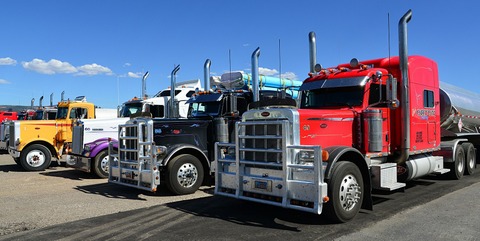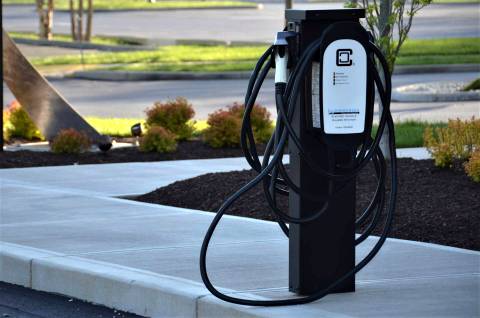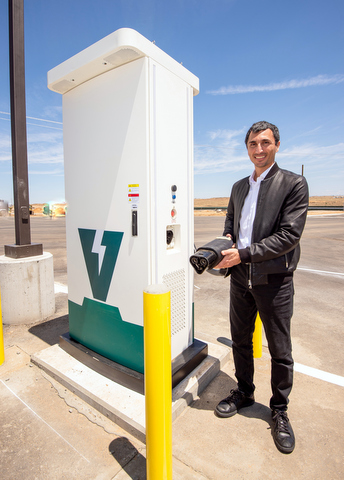Making the Electrical Transfer Extra Manageable
Electrical automobiles (EVs) are the way forward for the automotive business as a result of they remove emissions and are straightforward to take care of. Nevertheless, the transition might be difficult for corporations on tight budgets. How are you going to convert your fleet to electrical vans?
Right here’s a step-by-step information to make the change extra manageable.
1. Set a Timeline
First, it’s important to set a timeline and determine how shortly you wish to transition the automobiles. Right here, the corporate’s fleet measurement and funds matter probably the most. An entire overhaul might require a major upfront funding, so a gradual transition might take advantage of sense. Some state laws, just like the Superior Clear Fleet Rule in California, could dictate the tempo of your transition.
Logistics managers must also think about their operations and downtime when switching to electrical vans. A staggered technique lets corporations decrease disruptions and hold automobiles on the street. Drivers additionally might have time to be taught the brand new vans and make changes.
2. Calculate Driving Wants

A essential issue for an electrical truck fleet is the vary. EVs can solely final so lengthy on the street earlier than needing to recharge, so fleet house owners ought to calculate their driving wants. How lengthy are your routes? Are there charging stations? These components have an effect on how possible these automobiles can be for your online business.
Charging stations deserve particular consideration as a result of vans want them for long-distance hauling. Analysis reveals the U.S. has over 168,000 public charging shops, although not all are acceptable for vans. Some highways have stations for them, however there aren’t many at current. That’s altering as Bipartisan Infrastructure Regulation funds devoted to business infrastructure growth have stimulated substantial building of latest charging depots.
3. Set a Price range
Finally, your funds determines which electrical vans match together with your fleet. These heavy-duty automobiles are costly upfront, so be ready to speculate considerably. That mentioned, logistics managers ought to think about long-term funds as a result of EVs are usually cheaper to take care of.
The prices per truck might be costly, particularly if you happen to select one of many prime EV producers. As an illustration, the all-electric Tesla Semi prices $250,000 (in response to studies, few have made their manner onto the market thus far). Different electrical massive rigs which can be accessible from main gamers like Freightliner and Volvo are much more costly. That might be burdensome for many fleets. Costs might lower later with extra competitors, however the upfront prices stay excessive.
4. Use Monetary Incentives
Whereas electrical vans are costly, logistics corporations ought to think about inner and exterior monetary incentives. Diminished gasoline prices are a direct profit since you not must replenish with diesel. Many fleet house owners can reap the benefits of state and federal buy incentives to ease the burden.
Essentially the most vital federal incentive is the business clear car credit score. Fleet house owners can qualify for a credit score of as much as $40,000 in the event that they meet the standards. As an illustration, the corporate should primarily use the car in the USA and never resell it.
5. Receive Charging Tools

Battery capability and charging instances could make some fleet house owners nervous. Nevertheless, you may management a few of it by acquiring charging gear on your residence base. These stations guarantee drivers cost earlier than they depart and save time earlier than hitting the street, thus rising uptime.
Electrical vans want highly effective chargers due to their large batteries. Essentially the most environment friendly alternative on your fleet is a DC quick charger, although it’s the most costly. This station gives an 80% cost in half-hour for a mean car with a 100-mile vary. A full-charge for a typical 250-mile vary massive rig will take a pair hours, however sooner charging requirements are coming in a couple of years and a few charging gear is already being put in. A stage 2 charger with 240V might work for in a single day charging, however fleet house owners ought to keep away from a stage 1 system.
6. Put together for EV Upkeep
EVs have a robust repute for low upkeep. The machines don’t require lengthy days within the store since there are fewer shifting components. Nevertheless, electrical vans nonetheless want checkups to stay viable over the lengthy haul. Logistics corporations ought to prepare their workers on the most effective repairs practices.
Essentially the most urgent upkeep process for electrical vans is checking the battery. Common inspections are wanted to gauge its capability, contemplating its significance to uptime. Your group ought to examine the encircling charging cables and different components for harm and overheating points.

7. Optimize Battery Utilization
Fleet house owners ought to optimize battery utilization to get probably the most from their vans if the vary is regarding. Probably the greatest methods to take care of the batteries is just not totally charging them. Consultants say to cap charging at 80% to lengthen battery life and enhance its long-term steadiness.
One other manner to assist your electrical truck battery is to reduce losing it. Fleet managers ought to remind drivers to not deplete their car’s capability by idling or dashing on the freeway. Electrified fleets profit from telematics gadgets as a result of they monitor driver metrics and ship the information to the corporate.
8. Observe Financial savings Over Time
Relying on the scale of the fleet, the transition to electrical vans might take months and even years. Regardless, logistics managers ought to monitor the financial savings over time to make sure monetary accountability. Persistence is critical since you won’t break even for a couple of years.
Gauging financial savings begins with evaluating the entire new prices to the outdated fossil fuel-powered vans. As an illustration, fleet house owners ought to monitor charging bills and see how they measure towards diesel expenditures every quarter. The enterprise must also monitor financial savings with upkeep, emissions and different very important benchmarks.
Constructing an Electrified Fleet
Changing truck fleets to EVs is crucial for the complete fright motion business. Nevertheless, the transition received’t occur in a single day. Fleet house owners ought to meticulously plan the transition to maximise the advantages for his or her firm.
With an efficient plan, you may electrify your fleet and decrease operational downtime.
The publish A Step-by-Step Information to EV Fleet Transition first appeared on Clear Fleet Report.


